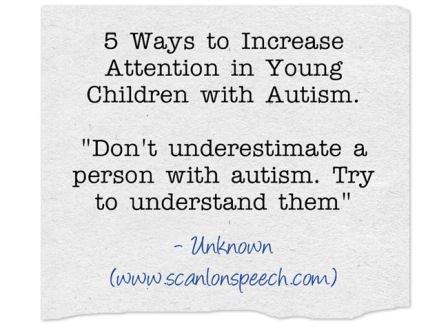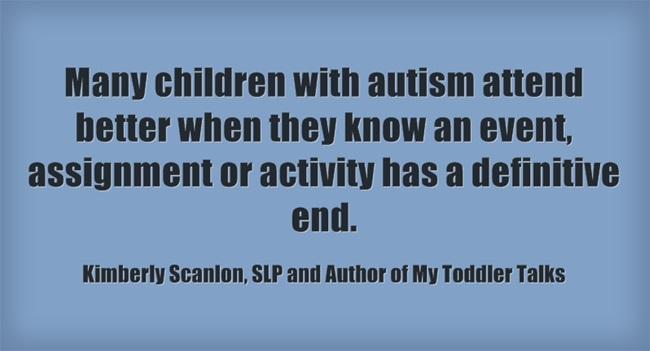Sign Up For Our E-Blast To Receive Information on our Books, Speech Therapy materials and our latest freebies!
Increasing Attention in Children with Autism
Tips for Increasing Attention in Children with Autism
I was listening to a friend’s story when all of a sudden I heard Will Smith’s song, “Gettin’ Jiggy Wit It”, playing in the background. Immediately I began to reminisce about high school and stopped focusing on my poor friend’s story. My friend pulled me back into the conversation when she said, “Ummm….Kim, are you listening to me?”
Usually, I’m an attentive and considerate conversationalist, but I was tired and hungry.
Imagine constantly having instances when you become distracted or can’t focus…
Imagine not realizing that you can’t focus or pay attention to a loved one…
Imagine how hard it must be to learn new skills and acquire knowledge if you can’t attend to the learning activity.
Attending is often challenging for children with autism. Orienting appropriately and maintaining and shifting attention can be difficult.
With the proper training, practice, and follow through individuals with autism CAN learn to better attend.
To improve your child’s attention skills, try some of the following evidenced based strategies:
- Follow your child’s lead. Give your child the opportunity to choose a desired toy or game. If he or she finds a hat interesting, play with the hat. Think of creative ways to incorporate turn taking and elements of surprise. For instance, wear a hat, take it off, put it on the child’s head, his or her foot, and then put it on a doll, etc.
- Imitate your child’s actions. Imitate his or her facial expressions, sounds, actions, or gestures. If they are jumping, you should jump too. They’ll get such a kick out of this and it may result in turn-taking. After you’re jumping for a little, change it up by putting your hands up in the air, point to your toes, touch your head, etc. Eventually, your child may imitate you.
- Label and talk about items. Talk about the items you are playing with or using and make sure to name them. This is especially important if you’re introducing a new toy. Remember NEW TOYS = NEW VOCABULARY.
- Join verbal and tactile cues. Combine verbal commands (“Look!”) with visual cues (point to an object, pick up an object) or with tactile cues (touch them on the foot, shoulder, etc) to elicit attention.
- Reward desired behavior and give target specific feedback. Positively reinforce your child’s attention. Give your child a desired toy after he or she has directed his or her attention to it. Verbally praise with target specific feedback. Don’t just say, “Good listening, Steve.” Say, “Steve, I really like how you looked at me when I said your name.” Tell them exactly what you liked!
These tips can be used during daily routines, play routines, and can be particularly effective when implemented during closed-ended activities. Many children with autism attend better when they know an event, assignment or activity has a definitive end…don’t we all, though?
To learn more about close-ended activities please read:
How Close-Ended Activities Improve Attention in Children with Autism
Hope these tips help.
References:
Patten, Elena & Watson, L.R. (2011). Interventions targeting attention in young children with Autism. American Journal of Speech-Language Pathology, 20, 60-69.
Kimberly Scanlon, M.A. CCC-SLP is a speech language pathologist, an author, and a mother. As the owner of Scanlon Speech Therapy, LLC, a unique boutique practice in Bergen County, Kimberly embraces individuality and treats the whole person. Her goal is to spread compassion, hope, and some speech, language and literacy tips one moment, one person at a time. Her first book, My Toddler Talks: Strategies and Activities to Promote Your Child’s Language Development and her second book, Learning to Read is a Ball
are available for purchase at online at Amazon and Barnes and Noble.
©2011 by Scanlon Speech Therapy, LLC. All rights reserved.


